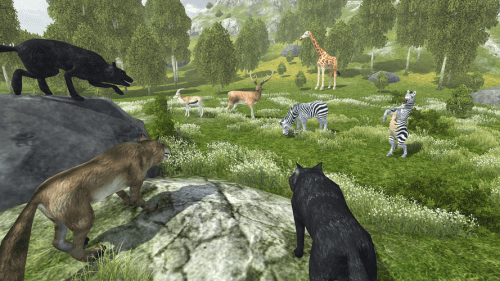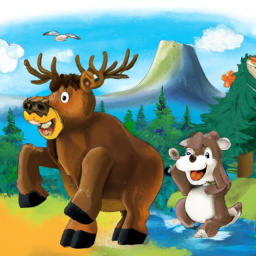
What’s up, nature lover? Are you looking for a new way to experience and learn about wildlife? Well, look no further because we’ve got the perfect solution: wild life downloads! In this article, we’ll explore what wild life downloads are, why they’re awesome, and how you can start enjoying them today. So, kick back, grab a cup of tea, and let’s dive in!
Wildlife Download: A Guide to Understanding and Protecting Wildlife in the Digital Age
As technology continues to advance, it has become easier to access and share content at a rapid pace. However, with this increased accessibility comes a threat to our environment and wildlife. Wildlife download has become prevalent in recent times, with people illegally downloading images and videos of rare and exotic animals. This puts their habitats in danger and can also lead to the animals themselves being harmed. In this article, we will look at the importance of understanding and protecting wildlife in the digital age.
Understanding Why Wildlife Downloading is Dangerous
Wildlife download is the process of illegally downloading content, such as images and videos, of wild animals. It is important to understand that this practice can be highly detrimental to the environment and the animals themselves. The illegal trafficking of wildlife is one of the most significant threats to species conservation. The illegal trade in endangered species is estimated to be worth several billion dollars per year, with wildlife trafficking considered the fourth largest illegal trade in the world. This practice is dangerous as it directly affects the natural habitats of these animals, which are essential for their survival.
The Effects of Wildlife Downloading on Animal Habitats
Wildlife downloading has a devastating effect on animal habitats. The trafficking of animals such as rhinos, elephants, and tigers for their horns and tusks has impacted their populations, reducing them to critical levels. These animals are hunted for their body parts to supply the growing illegal wildlife trade. When wildlife is illegally downloaded, it strips the animals of their natural habitats, making it difficult for them to survive.
In many cases, downloading wildlife content falsifies the environment as the animals may not be living in the settings they are purported to be in. This can lead to incorrect assumptions being made about the environment these animals live in, which may impact conservation efforts. If false assumptions are made, it may lead to inadequate conservation efforts, which can adversely affect animal populations.
The Impact of Wildlife Trafficking on Local Communities
Wildlife trafficking has far-reaching effects that affect not only the animals but also communities that live close to the habitats of these animals. For instance, communities that depend on wildlife for their livelihoods may face food insecurity as the population of these animals dwindles. Also, local poachers may be tempted to hunt illegally, leading to the further depletion of animal populations.
Wildlife trafficking can fuel conflict and corruption. Due to the high demand for illegal wildlife products, there is often an underground market of black-market dealers that are involved in the trade of endangered species. These trades pose significant risks to the wildlife population and can lead to corruption in law enforcement agencies.
Conservation Efforts to Protect Wildlife
Conservation efforts are critical to protecting wildlife populations that face severe threats. Conservationists work relentlessly to help protect and rebuild wildlife populations caused by wildlife trafficking activities. While there have been some successes, there is still much work to be done.
One critical strategy that conservationists use to combat wildlife trafficking is to create awareness about the threats posed by wildlife download. It is essential to educate the public on the effects of this activity and how it affects the environment and animal populations. By educating the public, we can create a deterrent to wildlife trafficking, and ultimately help protect these animals.
Another strategy being employed is the use of technology to track wildlife populations. This includes tracking the movement of animals and being able to track illegal activity in the trading of animal parts, thus reducing wildlife trafficking activities.
Conclusion
Protecting wildlife is essential to the well-being of our planet. In the wake of the digital age, it is increasingly important to consider the effects of wildlife download on animal habitats and populations. It is vital that people are made aware of the implications of wildlife trafficking activities, and how it affects the environment and animal populations. The use of technology and awareness-raising activities can help combat the illegal trade in wildlife and protect precious animal habitats.
Remember: when you engage in activities such as wildlife downloading, you contribute to the destruction of animal habitats, and can cause irreparable damage to ecosystems. It is our collective responsibility to ensure that we protect these animals in their natural habitats, and safeguard the future of our planet.